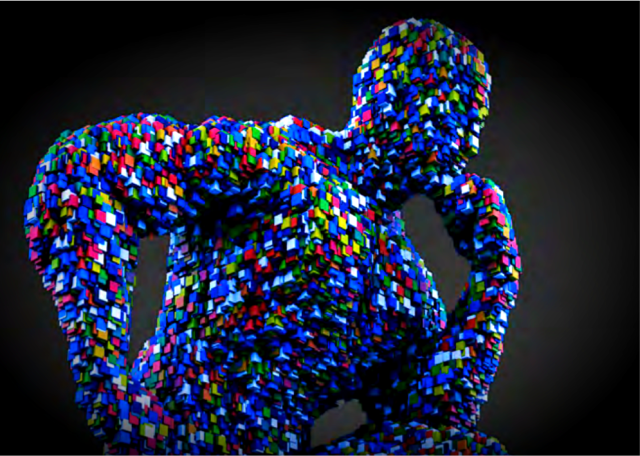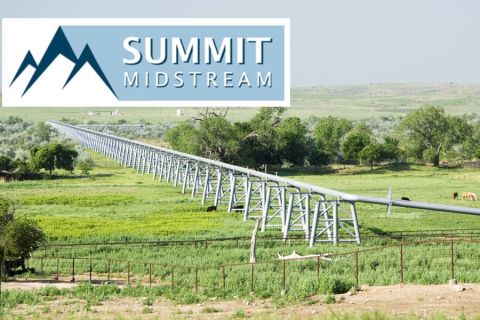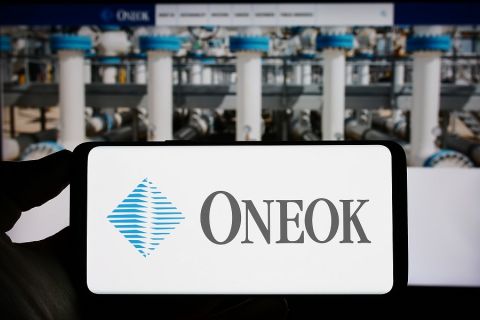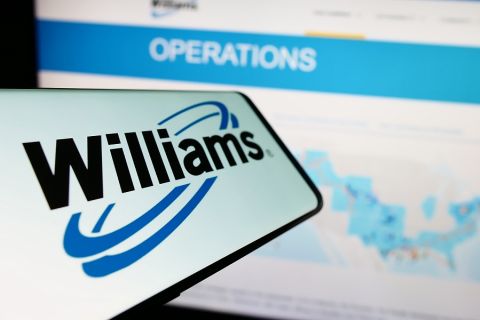
(Illustration by Robert D. Avila)
[Editor's note: This story appears in the July 2020 edition of Oil and Gas Investor. Subscribe to the magazine here.]
Artificial intelligence (AI) has traditionally been the stuff of science fiction—Hal 9000, Skynet, R2-D2 and Agent Smith come to mind. But today AI is at the forefront of technological advancement in almost every field, including oil and gas. Although these innovations offer tremendous opportunities to increase efficiency, safety and profits, companies may face challenges in securing intellectual property (IP) protection for their AI-based inventions. Companies that can successfully navigate IP pitfalls can reap the benefits of AI and gain a competitive advantage over competitors.
Growth of AI
Innovations incorporating AI are everywhere in modern industry and society, and the use of AI is growing rapidly. Digital assistants are ubiquitous—we can ask Siri to tell us the weather or have Alexa arm our home security system. Computer vision helps us avoid automobile accidents and stay in our lane on the road, and it will soon usher in a world of autonomous cars that operate with little or no human intervention. Companies use AI to schedule employee shifts, predict the shelf life of products and power robots that can assist doctors in performing surgeries. By 2023, worldwide spending on AI systems is estimated to be nearly $98 billion.
In oil and gas, AI and data analytics are already being used in a range of applications, from operating in dangerous environments that could endanger human workers to efficiently analyzing data to enhance exploration and drilling. This can allow companies to drill challenging wells more easily and reduce emissions in the process. AI also can assist with certain menial or repetitive tasks, automating them with little to no human involvement to achieve significantly higher efficiency. In the future, AI-enabled drilling systems may even steer drill bits with limited human oversight, and AI-powered robots may be used to autonomously map the ocean floor or inspect equipment for damage or defects.
Oil majors have already begun implementing these technologies. Royal Dutch Shell Plc, for example, uses AI to help guide drills as they move through the subsurface. The system applies algorithms derived from historical drilling data and simulated exploration including subsurface data from seismic surveys and mechanical information from the drill bit. Shell also relies on AI to improve safety for some dangerous tasks, such as using an automated pipehandler on its 120,000-ton Olympus platform to avoid needing human workers to handle 300-lb sections of drillpipe. Shell also leverages AI’s data processing and predictive capabilities in customer-facing applications, such as monitoring and predicting the demand for charging terminals for electric vehicles.
However, most of AI’s benefits have not yet been realized in oil and gas. Data analytics alone is an enormous area for growth as companies work to manage the explosion of data from offshore seismic studies and drilling tools that transmit drilling data to the surface in real time. Some reports estimate that petroleum engineers and geoscientists already spend over half their time searching and assembling data, a task that AI can perform more quickly and on larger datasets. AI also can perform analysis that humans cannot, such as detecting patterns in sensory data that humans may not perceive. As retirement in the industry increases, AI will be particularly crucial to fill the gaps in knowledge and expertise.

AI patenting
The rise of AI innovation has led to a corresponding rise in patent applications for AI inventions. A 2019 report on AI by the World Intellectual Property Organization showed the rate of patent filings on AI-based inventions is beginning to catch up with the rate of scientific publications on AI technology.
Of the nearly 340,000 patent applications for AI technologies that have been filed since 1960, more than half have been filed since 2013. The pace of AI-based patent filings is growing quickly in certain subareas. Machine learning, which is the dominant technique disclosed in AI patents, saw average annual growth in patent filings of 28% from 2013 to 2016. Within machine learning, neural network filings increased by an average of 46% over the same period, while deep learning saw an enormous average annual growth in patent filings of 175%. Filings for robotics and control methods saw 55% average annual growth. Patenting rates for AI-based inventions are growing far faster than for other technologies.
Despite the potential value of AI technologies in the oil and gas sector, other industries have been faster to capitalize on them by filing patent applications. In particular, transportation, telecommunications, personal devices, medical devices and security fields account for a great number of recent AI-based patent applications.
Challenges to patenting AI-based inventions
As with any technology, it is vital for companies to protect their investments in AI-based innovation through IP. Yet inventors may face serious hurdles both in obtaining AI-based patents from the U.S. Patent and Trademark Office (USPTO) and in defending such patents from legal challenges by competitors.
Recent case law addressing subject matter eligibility for patents poses a particular problem, with both the USPTO and courts frequently ruling that computer-based inventions involving manipulation of data are not eligible for patenting. Companies that are aware of these challenges to patenting and have strategies to overcome them will be best positioned to reap the benefits of AI innovations.
Section 101 of the Patent Act states that “[w]hoever invents or discovers any new and useful process, machine, manufacture or composition of matter, or any new and useful improvement thereof, may obtain a patent therefore, subject to the conditions and requirements of this title.”
Despite this broad language, the U.S. Supreme Court has interpreted this language to include several categories of subject matter that are ineligible for patenting—abstract ideas, laws of nature and natural phenomenon.
The Supreme Court explained in its opinion in Alice Corp. Pty. Ltd. v. CLS Bank Int’l that an invention directed to an abstract idea can only be eligible for patenting if it adds “something more,” sufficient to transform the underlying abstract idea.
What’s more, the Supreme Court has held that implementing an invention on a general purpose computer is insufficient to transform an abstract idea into a patent-eligible invention.
Recent cases applying Section 101 show it has become increasingly difficult to obtain or defend patents on AI-based inventions, which typically rely on a computer to gather and analyze data.
In TDE Petroleum Data Solutions v. AKM Enterprises, the U.S. Court of Appeals for the Federal Circuit held patent claims ineligible under Section 101 that recited “various processes for determining the state of an oil well drill.”

The claimed invention was a method of receiving data from oil well sensors (e.g., the rpm of the drillstring or the pressure of drilling fluid in the standpipe); removing any erroneous data; and determining the state of the oil well drill (e.g., drilling, sliding or borehole conditioning).
The court held that the method involved “the sort of data gathering and processing claim that is directed to an abstract idea.”
The court also held that the patent claims did not include “something more” that could transform the underlying abstract idea into a patent-eligible invention. Instead, the claims simply recite “generic computer functions that amount to nothing more than the goal of determining the state of an oil well operation.”
The court noted that, although the patent described certain embodiments of the invention in which the system automatically selected one of the states of the oil well based on its analysis of the data, that aspect was not recited in the claims. The court thus held the challenged patent claims invalid under Section 101.
The Federal Circuit similarly held patent claims invalid under Section 101 in Electric Power Group LLC v. Alstom S.A. The patent claims recited systems and methods for monitoring the performance of an electric power grid in real time by collecting data from multiple sources, analyzing the data and displaying the results.
The court explained that “information as such is intangible” and “analyzing information by steps people go through in their minds or by mathematical algorithms” fall within the abstract idea category.
The court also concluded that the patent claims did not transform the underlying abstract idea because they used “off-the-shelf, conventional computer, network and display technology” to perform the invention. Even though the invention may have been a valuable improvement in power grid monitoring, claims covering conventional computer technology to gather and analyze data made the patent ripe for a (successful) Section 101 challenge.
In Kaavo Inc. v. Amazon.com Inc., the U.S. District Court for the District of Delaware held patent claims invalid under Section 101 that related to managing a cloud-computing environment. Certain claims in the patent recited methods of analyzing data and using it to forecast an optimal cloud-computing environment.
The court held that even those claims did not contain any inventive concept sufficient to transform the underlying abstract idea of setting up and managing a cloud-computing environment. That court explained that, even though the forecasting claims may be performed using techniques such as neural networks, the claims “do not specify how the forecasting is performed, what monitoring data are used or how [the data] are used; any generic algorithm, neural network or regression analysis could be used.”
These cases and others show that AI-based inventions, which invariably use computers and usually involve data gathering and analysis, face challenges when it comes to patenting.
Strategies to protect AI inventions
Although the patent landscape is certainly treacherous for AI-based technologies, a strategic approach to patent drafting can help inventors maximize the chances of obtaining patents that can survive a Section 101 challenge.
Companies should draft patent claims to recite a practical application of any underlying abstract idea to avoid a court concluding that the claims cover the abstract idea itself. To do so, companies should tie any underlying concept or data-gathering steps to the physical activity or equipment from which data are being gathered.
The outcome in TDE Petroleum Data Solutions v. AKM Enterprises might have been different if the patent claims had required the system to not only gather and analyze data but use those data to control oil well operation. Companies must remember, however, that tying an invention to conventional computer components or specifying a particular field of application (e.g., oil well drilling) is not enough to transform any underlying idea.
It was such a practical application that led a court to uphold patent claims under Section 101 in Canrig Drilling Technology v. Trinidad Drilling. The patent claimed systems and methods that allowed directional drilling by rotating a drillstring to a predetermined angle and reduced friction by oscillating the drillstring between predetermined angles.
“A strategic approach to patent drafting can help inventors maximize the chances of obtaining patents that can survive a Section 101 challenge.”
Even though the patent claims recited some of the same generic computer implementation as in the TDE Petroleum case, such as receiving rotational information from a sensor and analyzing that information, the court found that patent claims were not an attempt to patent the underlying abstract concept of rotation because they also involved controlling the drillstring.
The court thus held that the claims were more narrowly drawn to physical apparatuses and processes and addressed “specific challenges in directional drilling through a concrete process for controlling the rotation of the long drillstrings to and between predetermined angles.”
Although the claims involved the abstract concept of rotation, they were eligible under Section 101 because they reflected a practical application of that concept to position and oscillate the drillstring.
Companies should draft their patents to include sufficient detail about the inventive aspects of their invention to show the patent claims “transform” any underlying abstract idea. This detail should include both the ways in which the invention improves on prior art systems or methods and how the inventive aspects of the invention operate.
In Kaavo Inc. v. Amazon.com Inc., the patent failed to include this disclosure. Although the court seemed to recognize that using neural networks to forecast an optimal cloud-computing environment might be inventive, the patent lacked detail about how a neural network would accomplish this.
Companies can avoid this outcome by providing additional disclosure in their patent specification about how to implement the inventive aspects of their invention.
Finally, where possible, companies should include detail in their patents about how their invention improves the underlying technology. Although patent claims that recite generic computer limitations are unlikely to survive Section 101, claims that describe an improvement in how computers operate have been more successful.
In the context of AI, companies should include in their patents a description of how their invention improves AI itself or the computer systems on which the AI-based invention is implemented. Courts are more likely to view an improvement in the underlying computer operation as sufficiently transformative to add “something more” to any underlying abstract idea, and thus patents that describe this type of improvement are more likely to survive a Section 101 challenge.
Recommended Reading
Summit Midstream Launches Double E Pipeline Open Season
2024-04-02 - The Double E pipeline is set to deliver gas to the Waha Hub before the Matterhorn Express pipeline provides sorely needed takeaway capacity, an analyst said.
FERC Approves ONEOK Pipeline Segment Connecting Permian to Mexico
2024-02-16 - ONEOK’s Saguaro Connector Pipeline will transport U.S. gas to Mexico Pacific’s Saguaro LNG project.
Kinder Morgan Sees Need for Another Permian NatGas Pipeline
2024-04-18 - Negative prices, tight capacity and upcoming demand are driving natural gas leaders at Kinder Morgan to think about more takeaway capacity.
Williams CEO: Louisiana Energy Gateway Start Temporarily in Limbo
2024-03-21 - Williams CEO Alan Armstrong said the project still moving forward after hitting a snag in a dispute with Energy Transfer but lacks a definitive start date.
Energy Transfer Asks FERC to Weigh in on Williams Gas Project
2024-04-08 - Energy Transfer's filing continues the dispute over Williams’ development of the Louisiana Energy Gateway.





